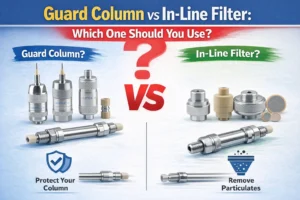
Guard Column vs In-Line Filter: Which One Should You Use?
In HPLC, most performance problems don’t start at the detector — they start before the column. High back
Home » HPLC Application in Medicine Manufacture
Contact uHPLCs Today for Any Questions for HPLC / UHPLC

In HPLC, most performance problems don’t start at the detector — they start before the column. High back

1. Introduction: The Hidden Impact of Solvent Effects in HPLC If you’ve ever observed baseline drift, unexpected baseline
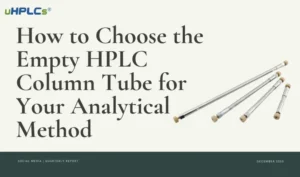
Introduction In high-performance liquid chromatography (HPLC), the choice of an empty column tube is often overlooked, yet it
High-Performance Liquid Chromatography (HPLC) plays a crucial role in the manufacture of medicine, helping to ensure the safety, efficacy, and quality of pharmaceutical products.
Its applications include the separation, identification, and quantification of drug compounds and their metabolites, making it instrumental in formulation development and process validation.
HPLC is also widely used for stability testing, to determine the degradation of pharmaceuticals over time and under various conditions. Additionally, it aids in detecting impurities and contaminants, thereby ensuring adherence to rigorous standards in medicine manufacturing.
HPLC’s versatility and high resolution make it a staple in the pharmaceutical industry, facilitating the development and quality control of safe, effective medicines.
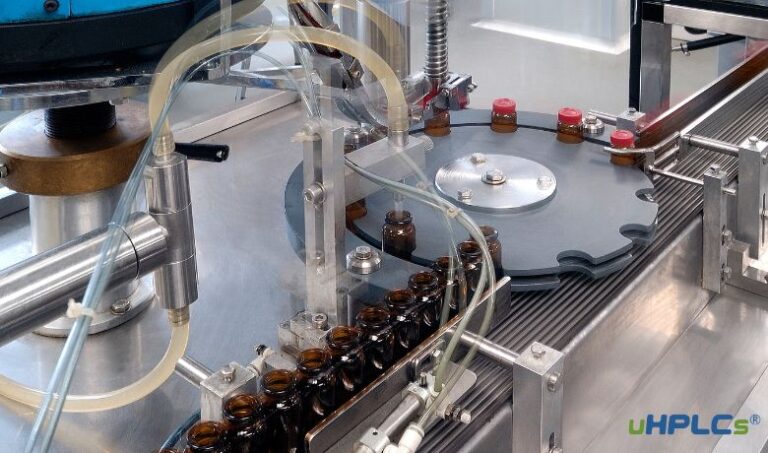
High-Performance Liquid Chromatography (HPLC) is an indispensable tool in medicine manufacture with numerous applications that ensure the production of safe and effective pharmaceuticals.
Purity Analysis: HPLC helps verify the purity of drugs by detecting and quantifying impurities and degradation products, ensuring that only safe products reach patients.
Quantitative Analysis: HPLC provides precise measurements of active pharmaceutical ingredients (APIs) in drug formulations, ensuring accurate dosages.
Stability Studies: HPLC enables testing of drug stability under different conditions such as temperature, humidity, and light, which is important for determining expiry dates and storage conditions.
Bioavailability and Bioequivalence Studies: HPLC helps to establish the rate and extent of drug absorption, critical parameters in drug design, and generic drug approval.
Quality Control: Routine HPLC testing ensures consistency in manufacturing processes and compliance with international quality standards.
Method Development and Validation: HPLC is extensively used in developing new analytical methods for emerging drugs and validating these methods for regulatory approvals.
Separation of Complex Mixtures: HPLC can separate complex mixtures, including those with similar chemical properties, enabling the study and manufacture of complex drugs, such as multi-drug combinations.
In conclusion, HPLC’s versatility, precision, and high resolution make it an essential instrument in the pharmaceutical industry.
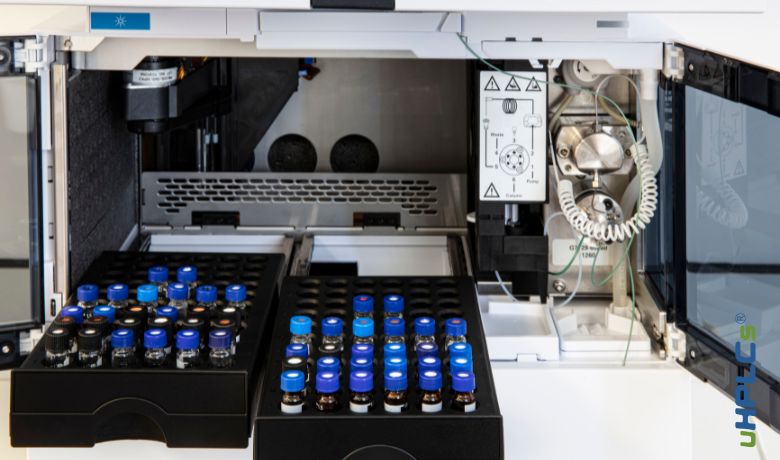
High-Performance Liquid Chromatography (HPLC) consumables are critical components that significantly influence the overall effectiveness, accuracy, and reliability of the HPLC analysis, especially in a demanding field such as medicine manufacture. Here are the key things to care about when dealing with HPLC consumables:
Quality: High-quality consumables can significantly reduce downtime, improve reproducibility, and extend the lifetime of your HPLC system. This means purchasing from reliable suppliers that offer products meeting industry standards.
Columns: HPLC columns are a critical consumable that dictates the separation efficiency. The choice of column (in terms of the stationary phase, size, and particle size) should be made based on the specific analysis to be conducted.
Mobile Phase Solvents: The purity of the mobile phase solvents is crucial for the accurate detection of compounds. Impure solvents can lead to noisy baselines and inaccurate results.
Filters and Frits: Filters and frits prevent particulate matter from entering the HPLC system, which can damage the column and the pump. Regular replacement of these consumables is essential for system upkeep.
Tubing and Connectors: These should be of high quality to withstand high pressures and prevent leakages. Poor quality tubing and connectors can lead to inconsistent flow rates and sample loss.
Vials and Caps: Vials should be clean and free from particles to prevent sample contamination. Caps should ensure a tight seal to prevent sample evaporation.
Maintenance and Storage: HPLC consumables should be properly maintained and stored when not in use to extend their lifespan and maintain performance. This includes regular cleaning and appropriate storage conditions.
Training: Staff should be adequately trained to handle, install, and replace these consumables properly. Mistakes during these processes can affect system performance and results.
In summary, careful consideration and management of HPLC consumables are crucial to ensure the efficiency, reliability, and accuracy of HPLC systems, thereby maintaining the high standards required in medicine manufacture.
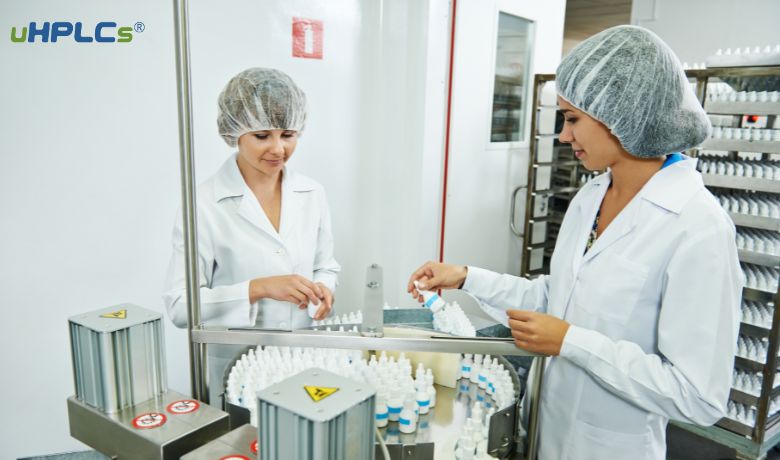
FAQs about HPLC Applications in Medicine Manufacture, special about replace HPLC Consumables in Medicine Manufacture
In medicine manufacturing, some of the most common HPLC consumables that require frequent replacement include columns, mobile phase solvents, filters, frits, tubing, connectors, and vials. Columns wear out over time due to the high pressure and the chemical nature of the mobile phase.
The quality and purity of mobile phase solvents should always be high, so they are often replaced regularly. Filters and frits need replacing often to prevent blockages that can compromise the system. Tubing and connectors can wear out due to high pressure and should be replaced to ensure airtight connections and consistent flow rates. Vials and caps are usually single-use to avoid contamination of samples.
The frequency of replacement depends on the specific consumable and the usage of the HPLC system. As a rule of thumb, columns should be replaced when they show signs of degradation, such as reduced resolution or increased backpressure.
Mobile phase solvents should be replaced regularly to maintain their purity. Filters and frits should be replaced after several runs, but this can vary depending on the nature of the samples. Tubing and connectors should be replaced whenever there’s any sign of wear or leakage. Vials and caps are usually replaced after each use to avoid cross-contamination.
Efficient and correct replacement of HPLC consumables requires careful planning, training, and documentation. Staff should be trained to identify when consumables need replacing, and there should be standard operating procedures in place for replacing each type of consumable. It’s also important to keep an accurate inventory of consumables and to have a reliable supply chain to avoid delays. Regular maintenance and service of the HPLC system can also help identify when consumables need replacing.
The replacement of HPLC consumables can greatly impact the quality of medicine manufacturing. Using fresh, high-quality consumables ensures accurate and reliable results, which is critical in a field where precision and consistency are paramount. Worn-out or low-quality consumables can lead to inaccurate results, poor reproducibility, and increased downtime due to system failures. Therefore, regular and proper replacement of HPLC consumables is crucial for maintaining the high standards required in medicine manufacturing.
Yes, several precautions should be taken when replacing HPLC consumables. First, always follow the manufacturer’s instructions for replacing consumables to ensure proper installation. Second, wear appropriate personal protective equipment (PPE) to prevent exposure to potentially harmful substances. Third, maintain a clean environment to avoid contamination of the HPLC system or samples. Fourth, ensure that consumables are compatible with your HPLC system and the samples being analyzed. Lastly, perform system checks or calibration after replacing critical consumables to ensure the system is working optimally.
There are several signs to look out for. If there’s an increase in system backpressure, it could be due to a clogged column or filter that needs replacing. If the chromatogram’s peak shape deteriorates or the retention time varies unexpectedly, it could indicate a worn-out column or impure mobile phase. Leaky connectors or irregular flow rate could indicate that the tubing or connectors need replacing. Lastly, any contamination or damage to vials should prompt their immediate replacement to ensure the integrity of the samples.
While some HPLC consumables like solvents, vials, and caps might be interchangeable among different systems, it’s always best to consult the HPLC system’s manual or manufacturer before using a different brand. Some consumables, particularly columns, are system-specific and using an incompatible column could damage the system or affect the analysis results. Furthermore, using non-recommended consumables may void the warranty of your HPLC system.
Proper storage of HPLC consumables is crucial to maintain their quality and longevity. Columns should be stored in appropriate conditions, usually in a tightly sealed container at room temperature. Mobile phase solvents should be stored as per the manufacturer’s instructions, generally in a cool, dark place. Tubing and connectors should be kept free from dust and other contaminants. Vials and caps should be stored in clean, dust-free boxes to prevent contamination.
Proper maintenance and use of the HPLC system can help extend the lifespan of consumables. Regularly cleaning the system and replacing the filters can prevent clogging of the column. Using high-quality and appropriate solvents can minimize damage to the column. Running the system at recommended pressures and temperatures can reduce wear on the tubing and connectors. Lastly, ensuring samples are free from particulates can reduce clogging and contamination of the system.
Yes, failing to replace HPLC consumables in a timely manner can have serious repercussions. It can compromise the quality and accuracy of the analysis, potentially leading to incorrect conclusions about the quality or safety of the medicines being manufactured. In addition, it can cause damage to the HPLC system, leading to costly repairs or replacements. Ultimately, neglecting the timely replacement of consumables can result in downtime in medicine manufacturing, delayed product release, and even compliance issues with regulatory bodies.
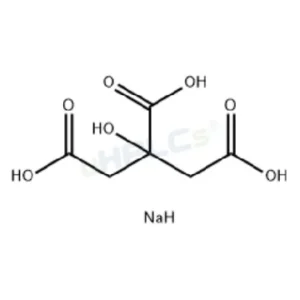
Uridine 5’-triphosphate Trisodium Salt (UTP-Na₃) Reference Standard | CAS 19817-92-6 | High-Purity Reference Materiel Product Code: U-D25015X Chemical

Glutathione (G-SH) Reference Standard | CAS 70-18-8 | High-Purity Reference Materiel Product Code: G-D25016X Chemical Name: Glutathione (G-SH)

Adenosine 5’-triphosphate Disodium Salt Reference Standard | CAS 987-65-5 | High-Purity Reference Materiel Product Code: A-D25014X Chemical Name:
WhatsApp us
Subscribe for exclusive offers and updates on new arrivals